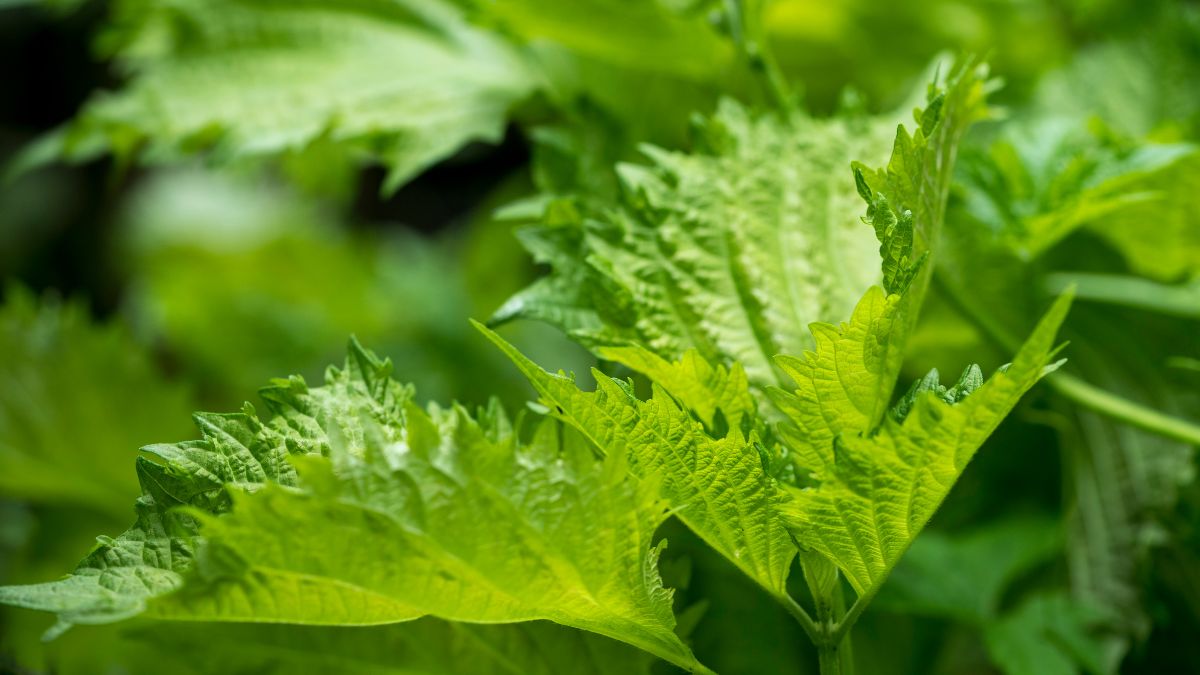Introduction
Known in Japan as shiso, Perilla frutescens var. crispa is an interesting member of the mint family, Lamiaceae. This plant, originally from the highlands of China and India, has slowly made its way throughout the world, winning the favour of many people along the way. This article will explore into the varied world of shiso, including its history, culinary use, medicinal properties, and cultivation techniques.
About Perilla frutescens var. crispa
The herb shiso comes from the species Perilla frutescens and is known by the cultivar name Perilla frutescens var. crispa. Leaves of this plant are highly prized for their unique appearance and pleasant scent. There are several varieties of shiso, and they all have their own distinct qualities, most notably in the colour as well as texture of their leaves. Red, green, bicolor, as well as ruffled are the most widely available colours as well as patterns. These distinctions are what endear shiso to cooks and make it so adaptable.
Historical Significance
Shiso has deep roots in East Asian as well as Southeast Asian traditions. Its use extends back centuries in China, where it was previously prized as a nutritious food. Because of its unique taste as well as aroma, the plant was an essential ingredient in several classic cuisines.
The Many Faces of Shiso
Varied Leaf Types
Leaves are where shiso’s variety really shows. The green , or aojiso, is prized for its pleasant, cinnamon-like aroma, while the red shiso, or akajiso, is utilised largely for its brilliant colour in pickling. The red as well as green leaves of bicolor provide for a deliciously contrasting visual as well as gustatory experience. The frilly shiso is used as a garnish because of its eye-catching appearance.
Perennial or Annual?
Shiso is a perennial herb that thrives as an annual in mild climates. Because of its versatility, you can always have access to a plentiful supply of fresh shiso leaves no matter where you choose to dwell.
Shiso in Culinary Delights
Shiso in Japanese Cuisine
Commonly referred to as shisho, shiso leaves are an integral part of traditional Japanese cooking. Sushi as wel as sashimi employ them because their earthy flavour complements the freshness of the fish. Umeboshi, or pickled plums, take on the distinctive flavour of leaves and become a famous condiment in Japan.
Shiso in Korean Cuisine
In the form of kkaennip, is widely used in Korean cooking, typically as a wrap for grilled meats as well as vegetables. The mildly minty and earthy flavour of the herb is a welcome addition to meals like ssam.
Shiso in Chinese Cuisine
Like nori in Korean and nori in Japanese cooking, is frequently used to encase meat in Chinese cooking. These fragrant leaves are prized for their ability to elevate the flavours of anything they enclose.
Shiso as a Microgreen
This is used in more than simply East Asian cooking. It is very popular as a microgreen in American gardens. Its flavour as well as nutritional value as a baby green make it a fascinating choice for salads as well as garnishes.
Health Benefits of Shiso
Rich in Nutrients
It is a delicious herb with added health benefits. It is a nutritious addition to your diet because of the high levels of vitamins, minerals, as well as fibre it contains
Antioxidant Properties
The antioxidant effects of shiso are well-documented, and have been shown to reduce the risk of cell damage from free radicals. Incorporating this plant into an antioxidant-rich diet can be beneficial.
Potential Health Benefits
It’s possible that shiso’s anti-inflammatory as well as anti-allergenic qualities go beyond its nutritional value. This tasty herb may have health benefits beyond its pleasant flavour.
Growing Shiso
Suitable Climate
It is a low-maintenance plant. It does well in mild winters as well as mild summers, as well as it adapts well to many soil types. It may be grown anywhere, from a yard to a windowsill.
Growing Tips
Grow healthy plants by giving them plenty of water, sunshine, as well as well-drained soil. Pruning on a regular basis might encourage a fuller, bushier plant with more leaves.
Harvesting and Storage
Harvesting Shiso
Once the plant has reached a certain size, the leaves can be picked. To promote new growth, prune the leaves close to the stem.
Storing Shiso
Refrigerating this in a plastic bag will keep it fresh for up to a week. The herb’s shelf life can be increased by several days with correct storage.
Conclusion
To sum up, shiso, or Perilla frutescens var. crispa, is an extraordinary plant with a storied past as well as bright future. It’s a one-of-a-kind addition to any kitchen thanks to its many shapes, culinary uses, health advantages, as wel as simple growing.
FAQs
Is Shiso the same as Perilla?
There is a big difference between shiso as wel as Perilla. The term “shiso” is used to describe a few select cultivars of the plant Perilla frutescens that are prized for their distinctive leaves.
Can I grow at home?
Absolutely! Because of its ease of cultivation, it is a wonderful addition to any garden or indoor plant collection.
How do I use this leaves in cooking?
Its leaves have several uses, such as a wrapping, a garnish, or a salad addition. They are a must-try for foodies because of the unique flavour they provide to recipes.
What are the health benefits ?
Because of its high vitamin content as well as antioxidant capabilities, this may contribute to one’s health in general.
Where can I buy its seeds or plants?
Seeds as well as seedlings may be purchased from garden centres, mail-order seed catalogues, and even certain gourmet food stores. Now is the perfect time to begin your journey.









